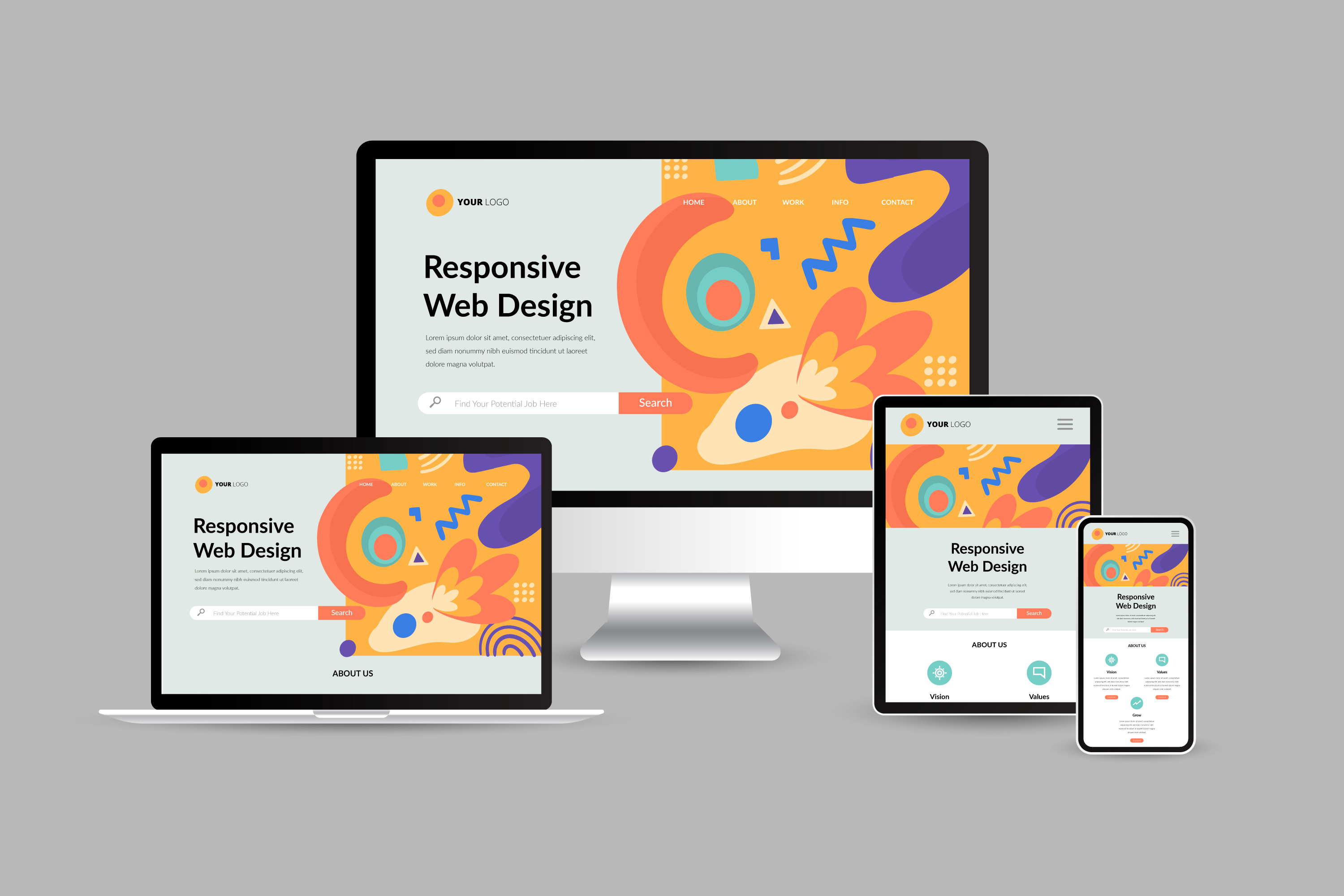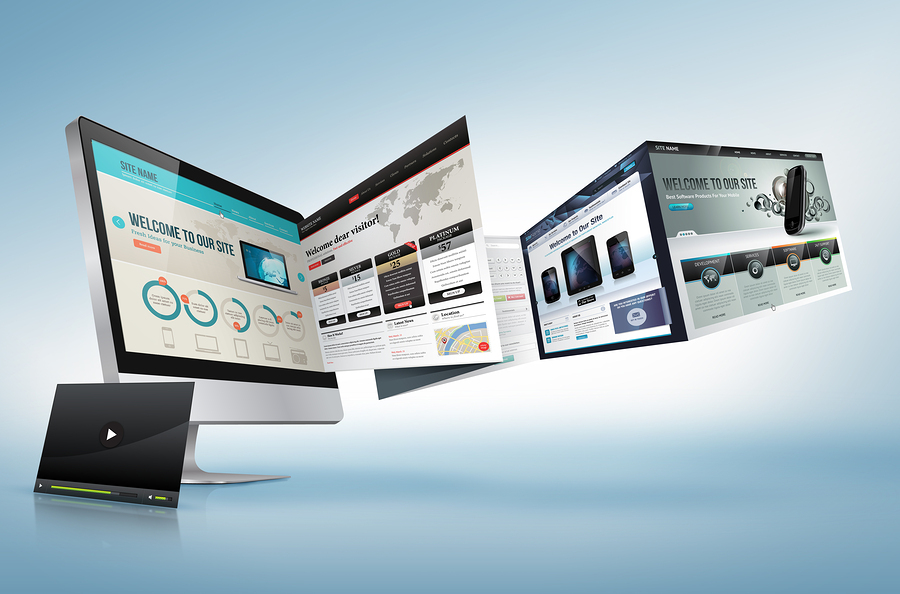Recognizing the Role of Typography in Website Design Excellence
Recognizing the Role of Typography in Website Design Excellence
Blog Article

Crafting a User-Friendly Experience: Essential Elements of Effective Site Style
Important elements such as a clear navigating framework, responsive layout principles, and quickly packing times offer as the structure for involving users successfully. Understanding the hidden aspects that contribute to efficient layout can drop light on how to boost individual complete satisfaction and involvement.
Clear Navigating Framework
A clear navigating structure is fundamental to reliable internet site design, as it straight influences user experience and engagement. Individuals must have the ability to locate details effortlessly, as instinctive navigating lowers stress and motivates expedition. An efficient design permits visitors to recognize the relationship between various pages and web content, resulting in longer site check outs and enhanced communication.
To achieve clearness, developers need to use acquainted patterns, such as top or side navigation bars, dropdown food selections, and breadcrumb trails. These aspects not only boost usability yet likewise supply a feeling of orientation within the site. Additionally, maintaining a consistent navigating framework throughout all pages is crucial; this familiarity aids customers anticipate where to find preferred details.
It is additionally crucial to limit the number of food selection items to avoid frustrating users. Focusing on one of the most crucial sections and employing clear labeling will assist site visitors efficiently. In addition, integrating search capability can additionally assist customers in situating particular material quickly (website design). In recap, a clear navigation framework is not merely a layout option; it is a tactical element that considerably affects the general success of an internet site by fostering a satisfying and reliable customer experience.
Responsive Layout Concepts
Efficient internet site navigating establishes the phase for a smooth user experience, which comes to be also much more vital in the context of receptive style concepts. Responsive style ensures that web sites adjust fluidly to numerous display sizes and positionings, improving accessibility across devices. This versatility is achieved via flexible grid designs, scalable images, and media queries that permit CSS to change styles based on the gadget's qualities.
Key principles of receptive layout consist of liquid layouts that use percents instead of fixed devices, making certain that elements resize proportionately. Furthermore, employing breakpoints in CSS enables the design to shift efficiently in between different gadget dimensions, enhancing the design for each and every screen type. The usage of responsive pictures is additionally vital; photos need to immediately adapt to fit the display without shedding top quality or triggering design changes.
In addition, touch-friendly interfaces are critical for mobile individuals, with adequately sized switches and instinctive gestures enhancing individual interaction. By incorporating these concepts, developers can develop websites that not just look aesthetically pleasing but likewise give functional and interesting experiences throughout all devices. Inevitably, efficient responsive style promotes user satisfaction, decreases bounce rates, and motivates longer involvement with the content.
Fast Loading Times
While individuals significantly expect websites to pack promptly, quick packing times are not simply an issue of convenience; they are important for retaining visitors and enhancing total customer experience. Research study shows that customers typically abandon web sites that take longer than three seconds to tons. This abandonment can bring about increased bounce prices and reduced conversions, eventually damaging a brand's online reputation and revenue.
Rapid filling times boost individual involvement and fulfillment, as site visitors are extra most likely to check out a site that reacts promptly to their communications. Furthermore, online search engine like Google prioritize rate in their ranking algorithms, meaning that a sluggish web site might struggle to attain exposure in search engine result.

Intuitive Individual User Interface
Fast loading times prepared for an interesting online experience, yet they are only part of the formula. An intuitive interface (UI) is vital to ensure site visitors can navigate a website effortlessly. A properly designed UI permits users to attain their objectives with minimal cognitive tons, cultivating a smooth communication with the site.
Crucial element of an user-friendly UI consist of constant format, clear navigation, and well-known symbols. Consistency in layout aspects-- such as color design, typography, and button styles-- assists users recognize just how to interact with the web site. Clear navigating frameworks, consisting of rational menus and breadcrumb trails, allow individuals to discover details promptly, decreasing disappointment and improving retention.
In addition, feedback systems, such as hover results and packing indications, notify users about their actions and the site's action. This transparency grows depend on and encourages ongoing interaction. Focusing on mobile responsiveness makes sure that users appreciate a cohesive experience across tools, catering to the diverse means target markets access material.
Accessible Web Content Standards

First, make use of simple and clear language, preventing lingo that may perplex visitors. Stress correct heading frameworks, which not only help in navigation but also aid screen viewers in translating additional hints material hierarchies effectively. Additionally, give alternative text for pictures to convey their definition to users that rely upon assistive innovations.
Contrast is one more important element; guarantee that text stands out versus the background to enhance readability. Make certain that video and audio material includes inscriptions and transcripts, making multimedia easily accessible to those with hearing impairments.
Finally, include keyboard navigability right into your design, permitting customers who can not utilize a mouse to accessibility all site functions (website design). By sticking to these available content guidelines, internet developers can create inclusive experiences that provide to the demands of all individuals, inevitably improving customer involvement and fulfillment
Conclusion
To conclude, the integration of crucial aspects such as a clear navigation framework, responsive style principles, quick packing times, an instinctive interface, and available content guidelines is important for developing an easy to use web site experience. These parts collectively enhance functionality and engagement, guaranteeing that users can effortlessly connect and browse with the website. Focusing on these layout aspects not only boosts overall satisfaction but also promotes inclusivity, fitting varied customer demands and preferences in the electronic landscape.
A clear navigation framework is essential to reliable web site style, as it directly affects customer experience and engagement. In recap, a clear navigating framework is not simply a design selection; it is a calculated component that considerably impacts the overall success of a web site by promoting a effective and satisfying individual experience.
Additionally, touch-friendly user interfaces are crucial for mobile individuals, with sufficiently sized buttons and instinctive gestures boosting customer interaction.While individuals significantly anticipate sites to pack rapidly, quick packing times are Going Here not simply a matter of comfort; they are important for retaining site visitors and enhancing overall customer experience. website design.In verdict, the assimilation of essential aspects such as a clear navigation structure, responsive style concepts, quickly filling times, an instinctive user interface, and accessible content standards is crucial for developing an user-friendly site experience
Report this page